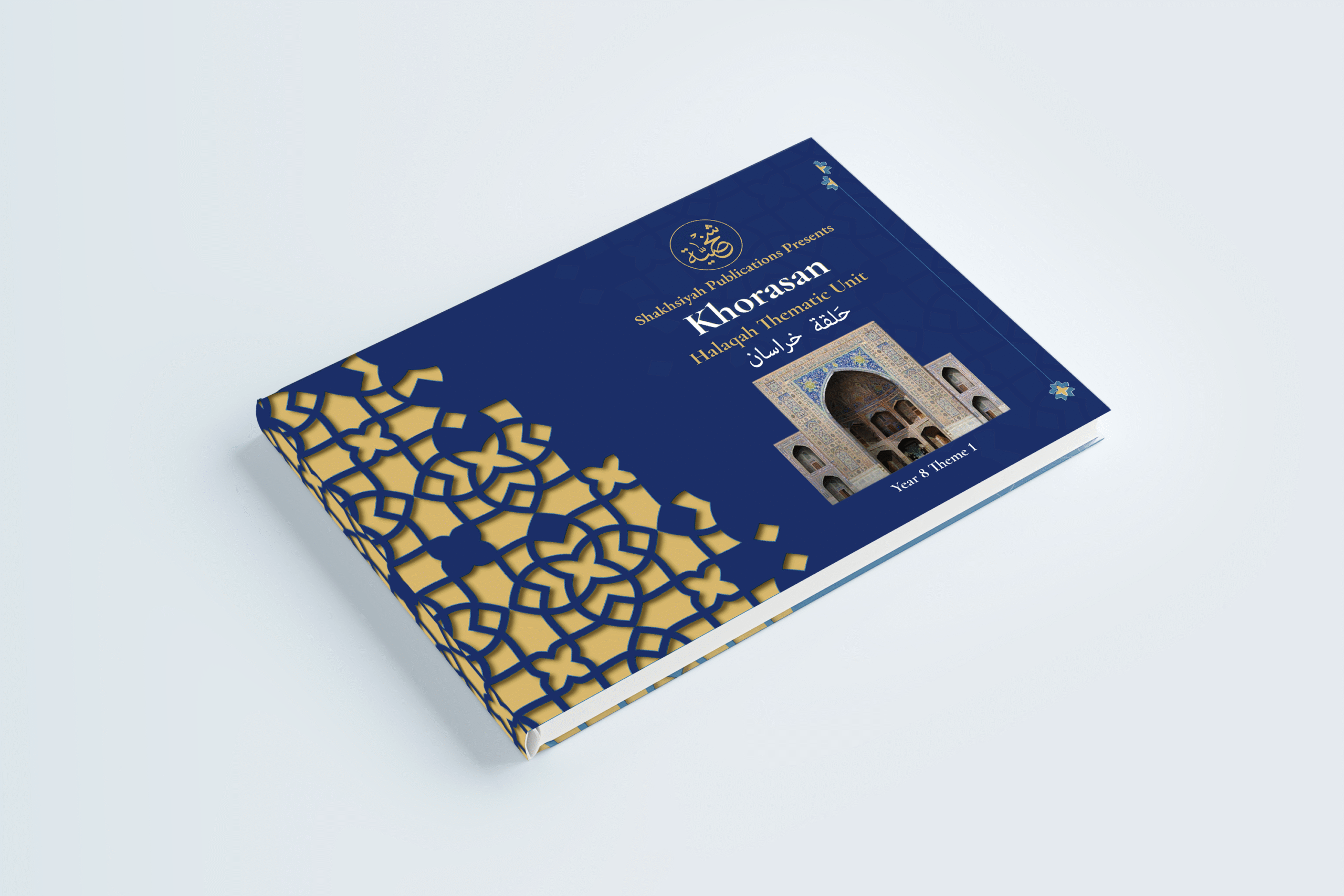Khorasan
Khorasan is a ḥalaqah thematic unit designed for learners aged 11–12 that delves into the rich cultural and intellectual heritage of Khorasan. This unit explores how this historic region became a vibrant hub of learning, cultural syncretism, and scholarly achievement, transforming through conquests, political shifts, and the blending of traditions.
The journey begins with the geography of Khorasan, its historical significance, and the impact of the early Muslim conquests. Learners analyze the fall of the Sassanid Empire, reflecting on hadith such as “Kisra will perish, and there will be no Kisra after him…” (Ṣaḥīḥ Muslim). They explore why Khorasan became a center of knowledge, its cultural syncretism, and how its architecture reflects its intellectual and spiritual legacy.They investigate local reactions to the Muslim conquest and ask, “Why Khorasan?” to understand its emergence as a center for dynamic knowledge and cultural exchange. The transformation of Khorasan is further illuminated by its distinctive architecture, reflective of a unique cultural synthesis.
The unit then shifts focus to the scholars of Ḥadīth and the enduring science of preserving knowledge. Learners explore the concept of riḥla—the journey of knowledge seeking—by exploring biographies of influential figures such as Imam al-Ghazāli and Imam al-Bukhāri, emphasizing not only their scholarly contributions but also the adāb (etiquette) that shaped their lives. Through examining isnād and ʿilm al-rijāl, learners discover why biographies matter in authenticating historical narrations and understanding Islamic heritage. This aligns with the Qur’ānic teaching: “Say, ‘Are those who know equal to those who do not know?’ Only those of understanding will take heed.” (Surah al-Zumar, 39:9)
A critical component of the unit is the practical application of these lessons through an Inquiry Project, where learners research, construct timelines, and create character sketches to build a comprehensive understanding of a Khorasani scholar of their choice. This project encourages critical analysis and the verification of information, fostering intellectual curiosity and humility. Guided by Qur’ānic wisdom and prophetic traditions, learners are reminded: “Whoever travels a path in search of knowledge, Allah will make easy for him a path to Paradise.” (Ṣaḥīḥ Muslim) The unit inspires learners to appreciate how context shapes understanding and to honor the legacy of Khorasan as a beacon of knowledge.
Our curriculum materials are still in the process of being printed and will be available in late 2025 and we are currently taking pre- orders. If you have already placed an order, we will be sending you a follow up email with details of sending your products.
£49.99
Description
Khorasan is a ḥalaqah thematic unit designed for learners aged 11–12 that delves into the rich cultural and intellectual heritage of Khorasan. This unit explores how this historic region became a vibrant hub of learning, cultural syncretism, and scholarly achievement, transforming through conquests, political shifts, and the blending of traditions.
The journey begins with the geography of Khorasan, its historical significance, and the impact of the early Muslim conquests. Learners analyze the fall of the Sassanid Empire, reflecting on hadith such as “Kisra will perish, and there will be no Kisra after him…” (Ṣaḥīḥ Muslim). They explore why Khorasan became a center of knowledge, its cultural syncretism, and how its architecture reflects its intellectual and spiritual legacy.They investigate local reactions to the Muslim conquest and ask, “Why Khorasan?” to understand its emergence as a center for dynamic knowledge and cultural exchange. The transformation of Khorasan is further illuminated by its distinctive architecture, reflective of a unique cultural synthesis.
The unit then shifts focus to the scholars of Ḥadīth and the enduring science of preserving knowledge. Learners explore the concept of riḥla—the journey of knowledge seeking—by exploring biographies of influential figures such as Imam al-Ghazāli and Imam al-Bukhāri, emphasizing not only their scholarly contributions but also the adāb (etiquette) that shaped their lives. Through examining isnād and ʿilm al-rijāl, learners discover why biographies matter in authenticating historical narrations and understanding Islamic heritage. This aligns with the Qur’ānic teaching: “Say, ‘Are those who know equal to those who do not know?’ Only those of understanding will take heed.” (Surah al-Zumar, 39:9)
A critical component of the unit is the practical application of these lessons through an Inquiry Project, where learners research, construct timelines, and create character sketches to build a comprehensive understanding of a Khorasani scholar of their choice. This project encourages critical analysis and the verification of information, fostering intellectual curiosity and humility. Guided by Qur’ānic wisdom and prophetic traditions, learners are reminded: “Whoever travels a path in search of knowledge, Allah will make easy for him a path to Paradise.” (Ṣaḥīḥ Muslim) The unit inspires learners to appreciate how context shapes understanding and to honor the legacy of Khorasan as a beacon of knowledge.




Reviews
There are no reviews yet.